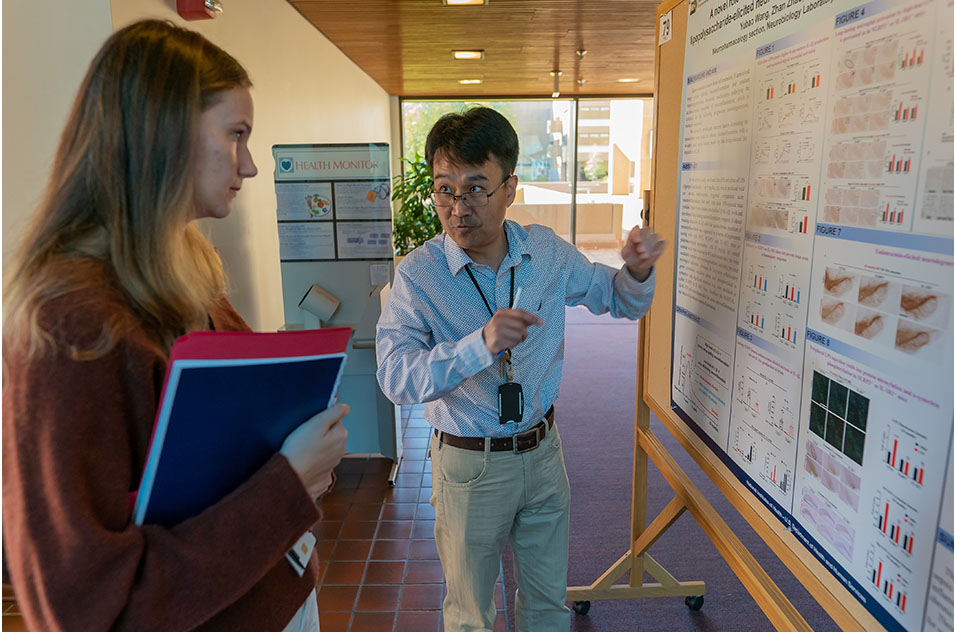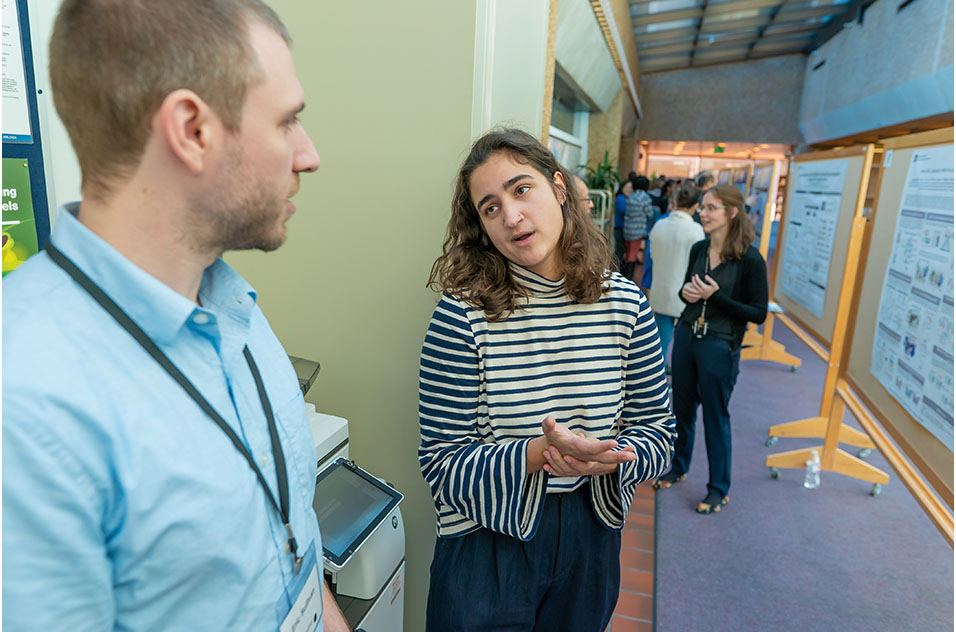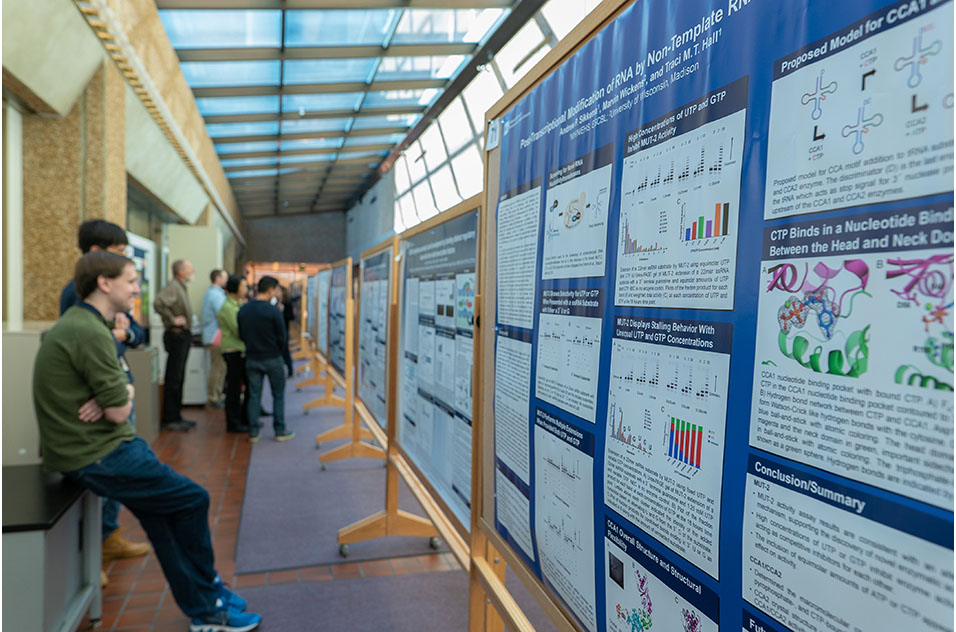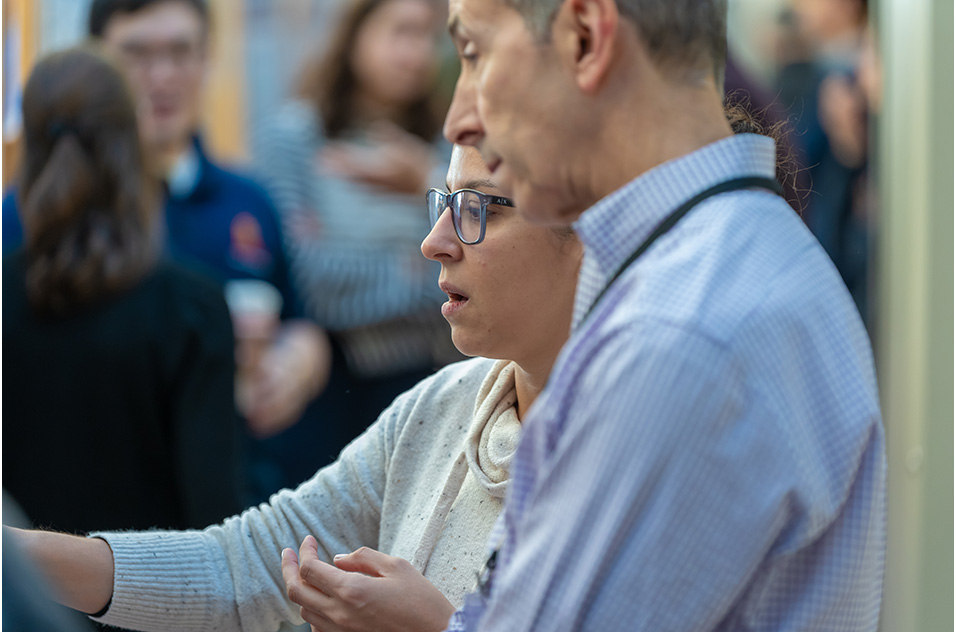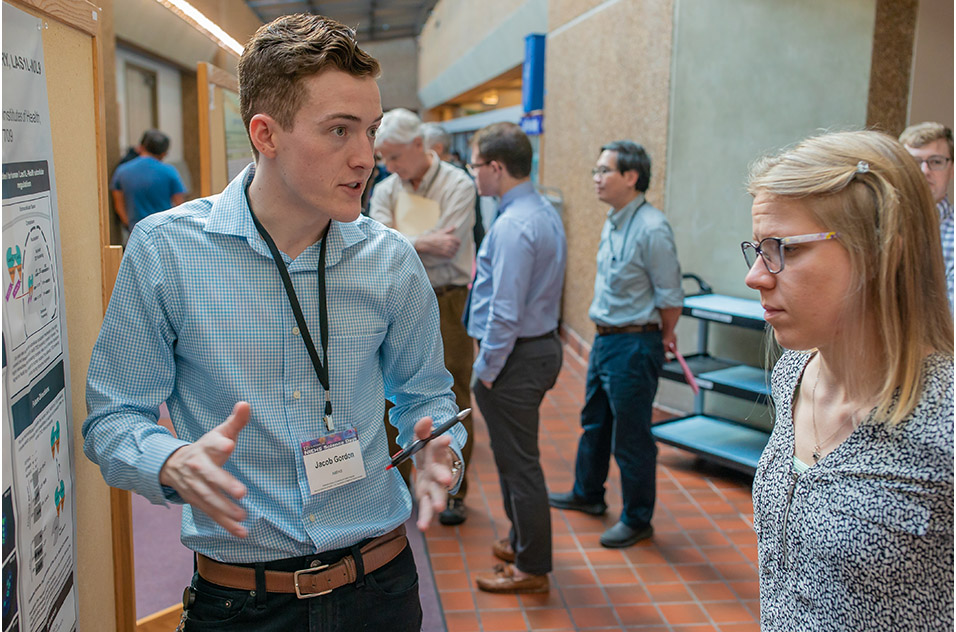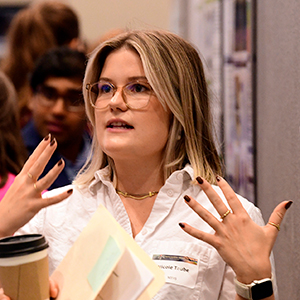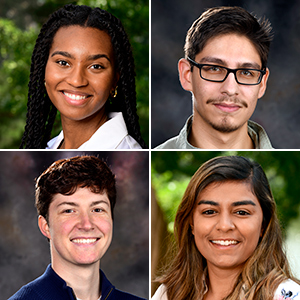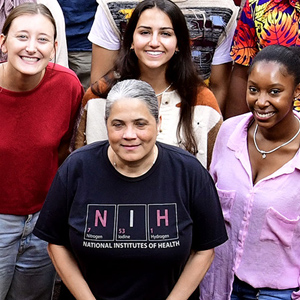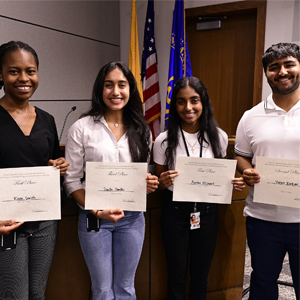The second day of the 17th Annual NIEHS Science Days, held Nov. 8, continued the institute’s celebration of its trainees’ scientific achievements. It featured 87 poster presentations by postdoctoral, predoctoral, and postbaccalaureate research fellows. There also was a workshop about the grant application process, aimed at helping fellows advance in their careers.
According to NIEHS Assistant Scientific Director Hans Luecke, Ph.D., a major goal of the event is to give young researchers a platform to discuss their work, a sometimes rare opportunity for early-career scientists. He said another objective is to maintain ties with grantees at nearby universities, who are invited to view the posters and explore potential collaboration opportunities.
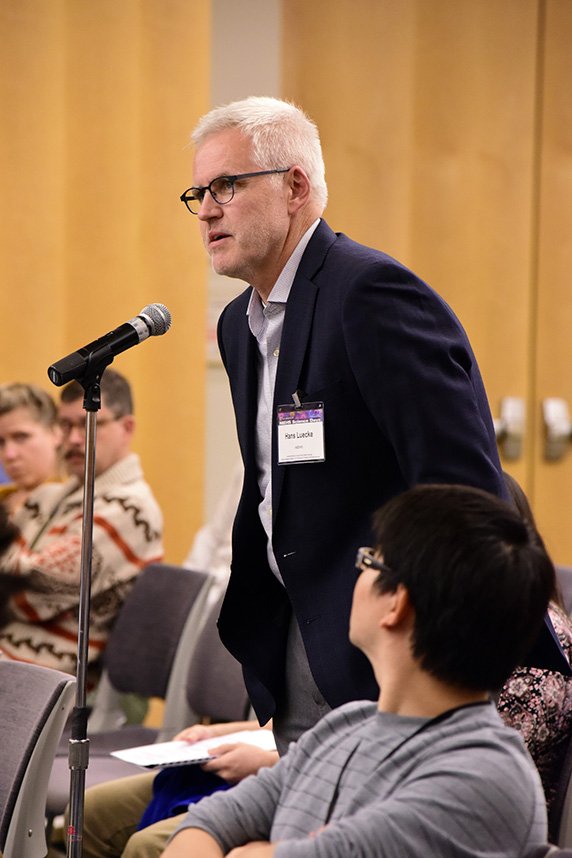 “I’m of the opinion that every chance you get to present your work orally or on poster is valuable,” said Luecke, shown here asking a question during a presentation on Day 1. (Photo courtesy of Steve McCaw)
“I’m of the opinion that every chance you get to present your work orally or on poster is valuable,” said Luecke, shown here asking a question during a presentation on Day 1. (Photo courtesy of Steve McCaw)Arsenic, Parkinson’s, abnormal fetal growth
Trainees presented their latest research, which covered a range of topics. Some posters discussed in utero exposure to arsenic, treatment for Parkinson’s disease, health implications of hair product use in African-American women, and effects of endocrine-disrupting chemicals.
Barrett Welch, Ph.D., a postdoctoral fellow in the Perinatal and Early Life Epidemiology Group, joined NIEHS in July after finishing his doctorate degree at Oregon State University. Already, he has conducted research that could increase knowledge of the causes of abnormal fetal growth.
“We’re really interested in trying to differentiate potential ways oxidative stress and inflammation might be different between different types of growth outcomes in pregnancy,” Welch said. “So, basically, if a baby is too small, is there more inflammation or more oxidative stress compared to a normal-sized baby?”
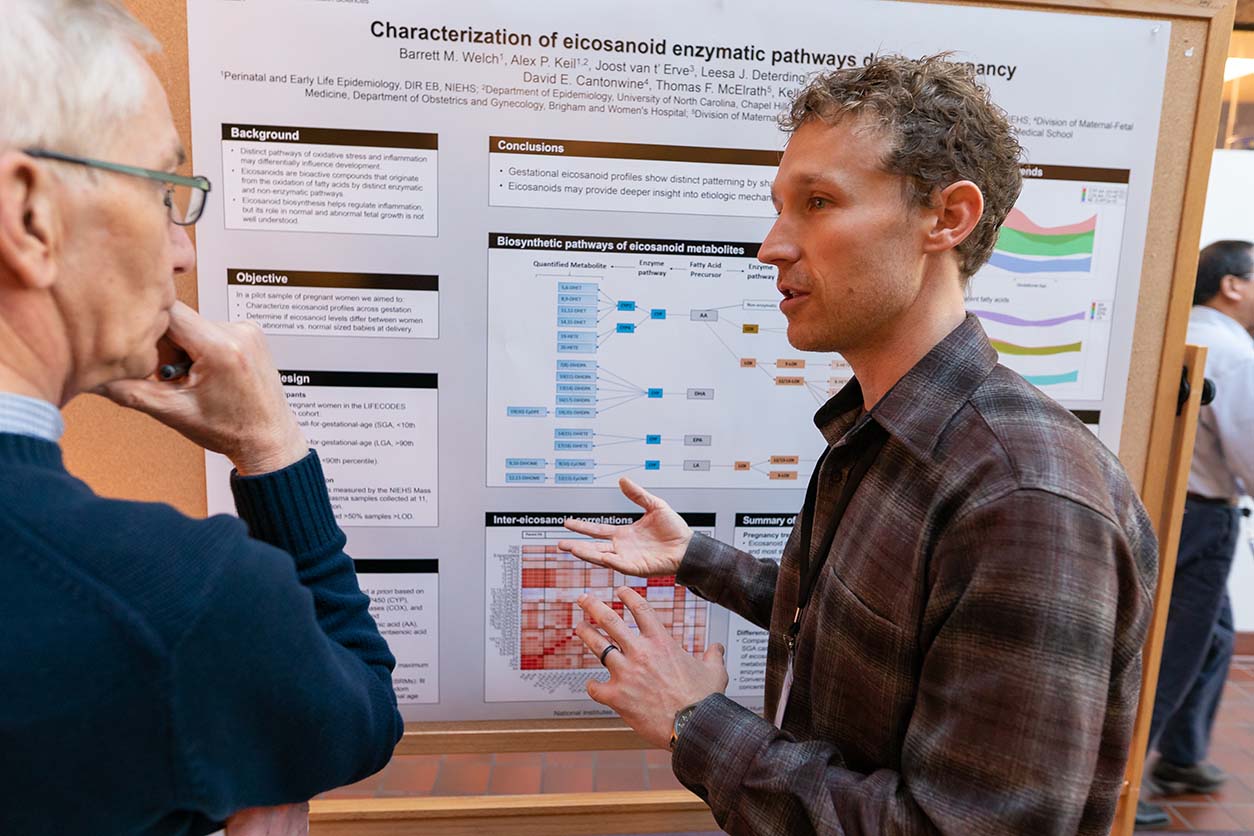 “I originally come from a more molecular toxicology background, and then in graduate school, I did environmental epidemiology. And this is just so cool to me because it feels like it’s merging those two [fields],” said Welch, right. Left, Anton Jetten, Ph.D., head of the NIEHS Cell Biology Group. (Photo courtesy of Michael Garske)
“I originally come from a more molecular toxicology background, and then in graduate school, I did environmental epidemiology. And this is just so cool to me because it feels like it’s merging those two [fields],” said Welch, right. Left, Anton Jetten, Ph.D., head of the NIEHS Cell Biology Group. (Photo courtesy of Michael Garske)NIEHS principal investigators and staff scientists, as well as outside researchers, judged the poster presentations. The top nine presenters (see sidebar) each won a $1,500 travel award to attend a scientific conference of their choosing.
Seeing the trees — and the forest
One of the winners, Cassandra Hayne, Ph.D., a postdoctoral fellow in the Nucleolar Integrity Group, reflected on the broader significance of her research.
“Part of what I’m studying is a basic understanding of the mechanisms behind RNA [ribonucleic acid] processing,” she said. “There are a lot of diseases that we don’t understand how to treat yet, and sometimes, basic science leads us a lot further into understanding that.”
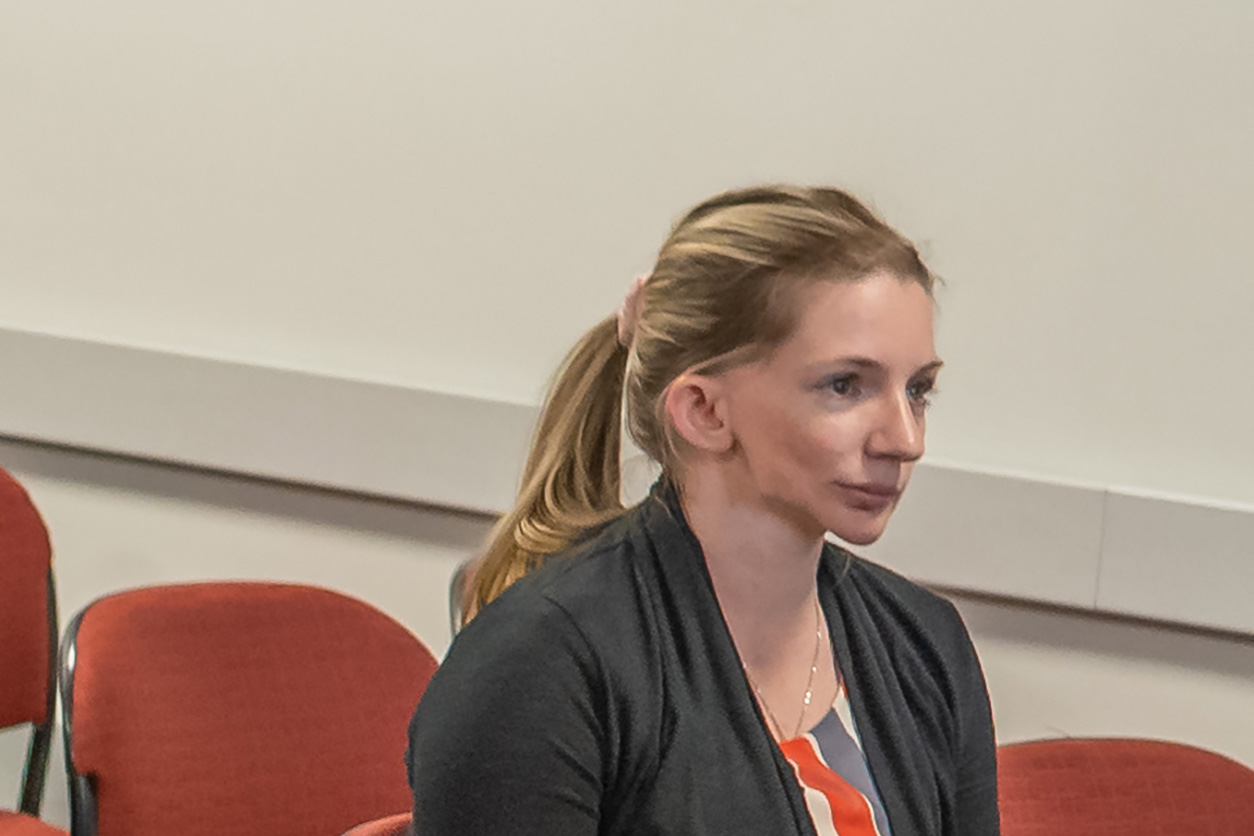 Hayne stressed the importance of basic research, noting that it has led to the discovery of medicines such as antibiotics. (Photo courtesy of Michael Garske)
Hayne stressed the importance of basic research, noting that it has led to the discovery of medicines such as antibiotics. (Photo courtesy of Michael Garske)“I’m interested in how eukaryotic cells make ribosomes, which are the mega-machines that produce all of the protein in our cells,” said Monica Pillon, Ph.D., another winner of the poster competition. “So, they are absolutely essential for our lives.”
“What I think is great about Science Days is you have all of these people with different backgrounds coming in and chatting with you about your project, and it makes you think about your [research] in different ways,” Pillon added.
All about the Benjamins
Day 2 ended with a session titled “Fund My Science!” that was organized by Michael Humble, Ph.D., a health scientist administrator in the Genes, Environment, and Health Branch.
As scientists leave the institute and begin their own labs at universities or elsewhere, it is critical for them to understand how to apply for grants from the National Institutes of Health (NIH).
During her overview of the application process, Health Scientist Administrator Anika Dzierlenga, Ph.D., explained that NIH provides almost $40 billion of research funding annually.
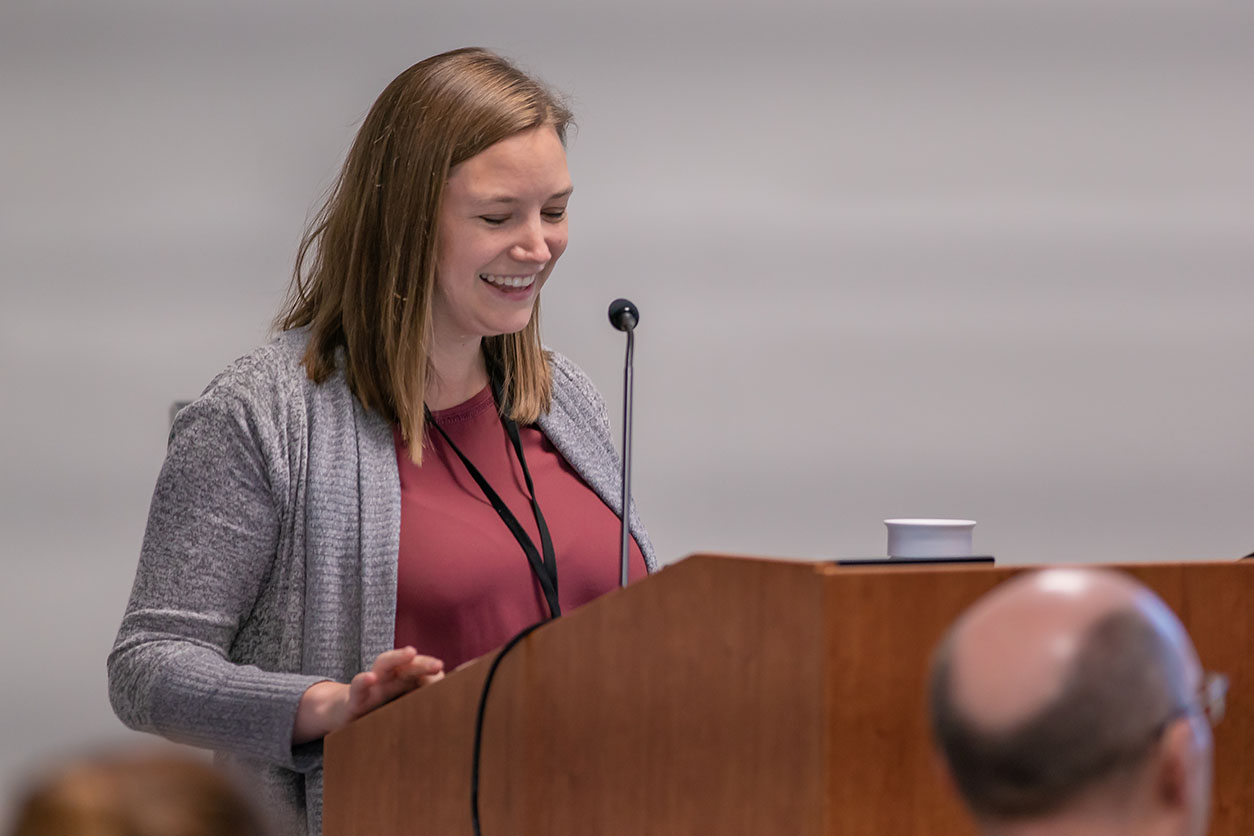 Before her current role, Dzierlenga was a postdoctoral fellow at the institute. “I’m especially happy to give back after all the support I received from [the Office of Fellows’ Career Development] and NIEHS in general,” she told trainees. Dzierlenga also volunteered as a writer for the Environmental Factor. (Photo courtesy of Michael Garske)
Before her current role, Dzierlenga was a postdoctoral fellow at the institute. “I’m especially happy to give back after all the support I received from [the Office of Fellows’ Career Development] and NIEHS in general,” she told trainees. Dzierlenga also volunteered as a writer for the Environmental Factor. (Photo courtesy of Michael Garske)“Eighty percent of those funds are distributed through competitive grants,” she said.
Trainees learned about available funding, what to expect along the way, and how to present research ideas to program administrators, among other information.
(Jesse Saffron, J.D., is a technical writer-editor in the NIEHS Office of Communications and Public Liaison.)





